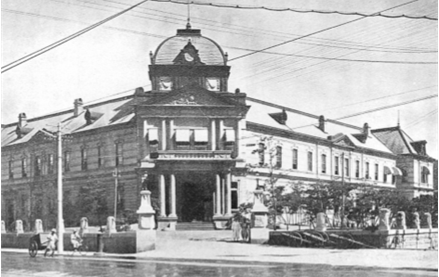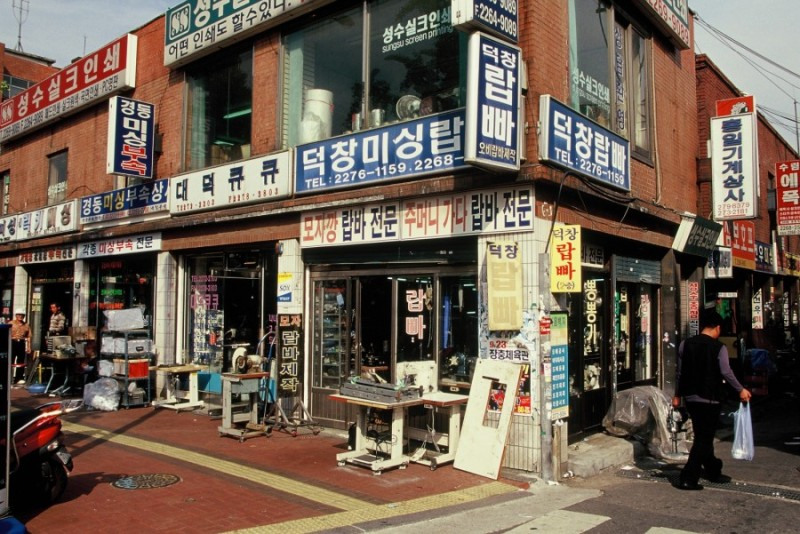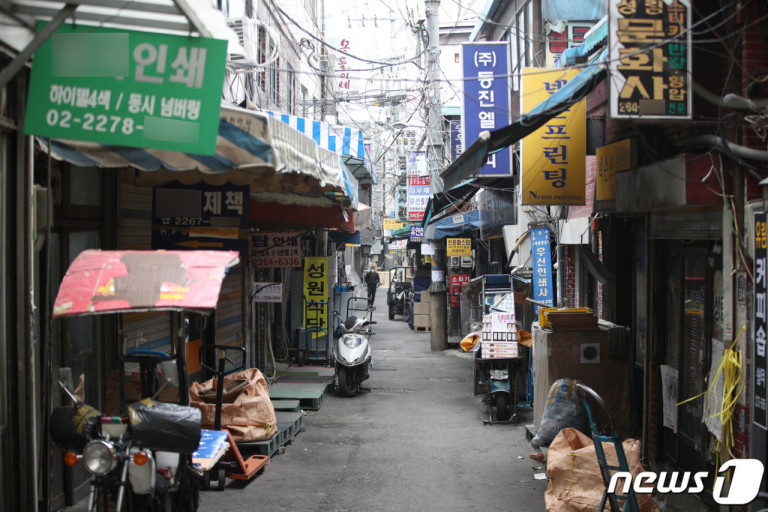Source: Ministry of Unification Official BlogIf you have traveled around Seoul on the subway, you have probably heard the name Euljiro, which refers to roads located in Jung-gu, Seoul and surrounding areas that are divided from Euljiro 1-ga to 7-ga.
Subway lines 2, 3, and 5 pass through Euljiro 1-ga, Euljiro 3-ga, and Euljiro 4-ga stations on the subway, so there are many accommodations around the area, making it a popular spot for tourists. Not only that, but it is also a place where you'll see many office workers because there are many offices buildings located nearby.
Euljiro, which has a modern atmosphere, is actually an area that has been around since the Joseon Dynasty. During the Joseon Dynasty, government offices were concentrated there. Various industrial facilities were built there during the modernization period.
After that, it was redeveloped in time for the completion of subway line 2 in 1984 and became the modern streets you are familiar with today.
Euljiro, which has undergone dynamic changes throughout the years, is an area where the past and present coexist. This unique environment and the recent retro craze have brought Euljiro back into the spotlight as 'Hip-jiro'.
In recent years, Euljiro has become a hotspot among hip, young Korean people. Shall we look at how Euljiro has changed and how traces of the past are still found there?
Euljiro During The Joseon Dynasty
 Source: Ministry of Unification Official Blog
Source: Ministry of Unification Official Blog
It's very different from what Euljiro looks like now, right? Euljiro was called Gurigae, or Copper Road and it was different from what it is now.
At that time, there was a mud hill between Euljiro 1-ga and 2-ga, that was a very dark, copper color, hence the name.
Euljiro During Japanese Colonization
During the Japanese rule of Korea, the Japanese took control of the Euljiro area and established the Oriental Development Company to exploit land and resources from the Joseon Dynasty.
The original name, Gurigae, was changed to Kogane-Cho, a Japanese name.
Euljiro After Liberation
After liberation, Kogane-Cho was changed to Euljiro after General Eulji Mundeok, a general during the Goguryeo era, widely regarded as one of the greatest military heroes in Korean history.
Immediately following liberation, it was destroyed by the bombings during the Korean War. Afterwards, many architects and construction workers gathered to rebuild Seoul and the area slowly regained life.
Since the 1960s, the textile and steel industries, which were the foundation of Korea's modernization, have flourished here.
Euljiro Now
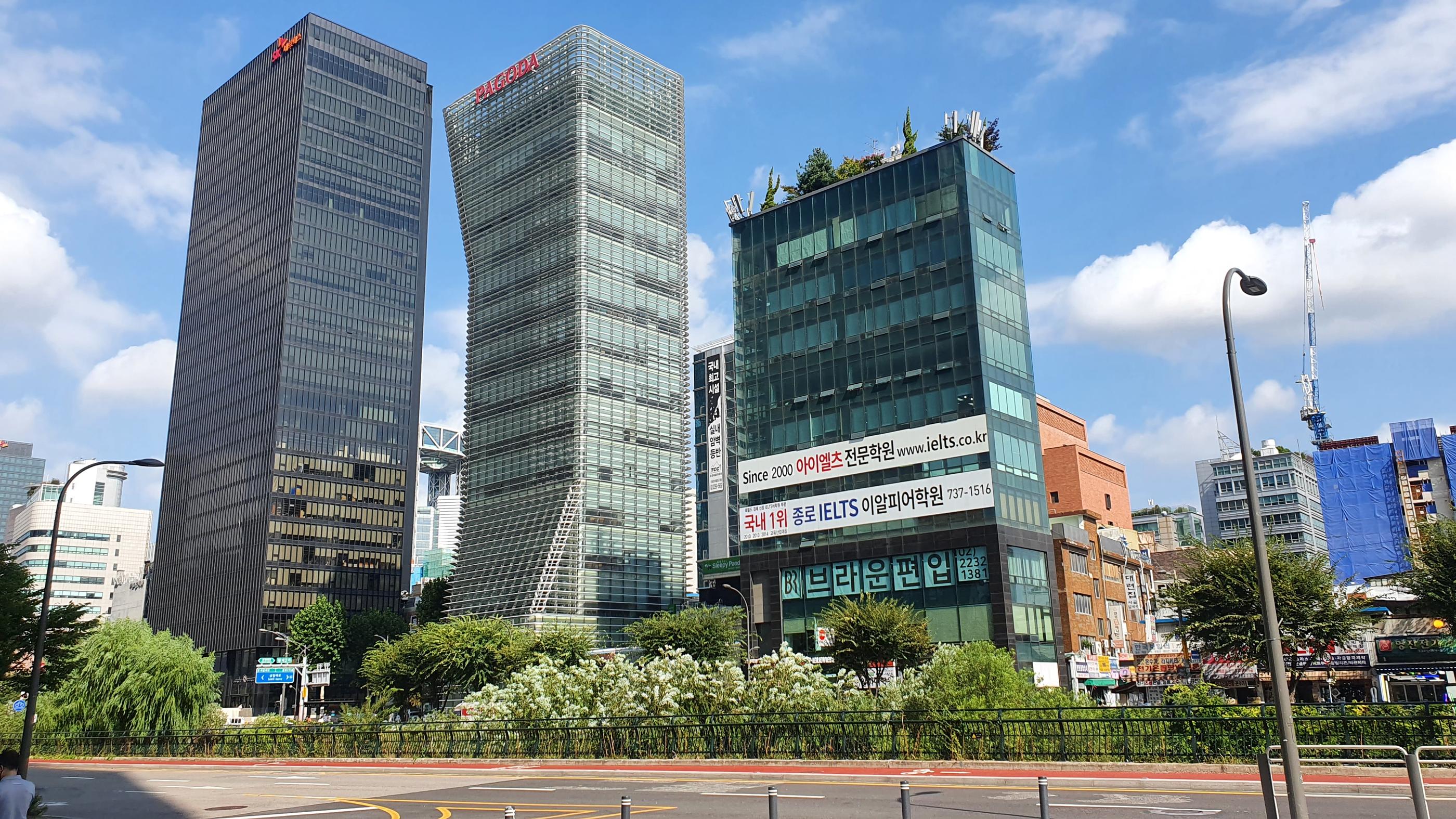
Through dynamic changes and growth, Euljiro has become full of skyscrapers. However, in this modern atmosphere, traces of its long history are hidden here and there.
It's fun to look around the alleyways of Euljiro and find them. Let's find out what stories are in each alley, store, and restaurant.
Living History
1. Printing Alley
![Seoul Korea Euljiro history, printing alley]() Source: News1 Korea
Source: News1 Korea
During the Joseon Dynasty, there were many government offices in Euljiro, so many hanji (Korean paper) shops were gathered around them. It's similar to how many printing companies are in the office area today.
In fact, in the 80s, printing areas were created there and started the printing alleys still there today. These alleys have been preserved and are reminiscent of the Euljiro of that time.
2. Nogari Alley and OB Bear

Source: News1 Korea
Euljiro's printing workers were hard workers who made a living on low wages. They ended a hard day with alcohol and cheap snacks.
At this time, a popular snack was the cheap nogari (dried pollack). Because of this trend, many bars sold nogari in Euljiro, and as a result, Nogari Alley was created.
This place, which used to be popular among production workers in the past, is now crowded with young visitors there to take in the popular retro vibe.
Address: 서울특별시 중구 충무로9길 12
12 Chungmu-ro 9-gil, Euljiro 3-ga, Jung-gu, Seoul
Hours: 13:30-23:00
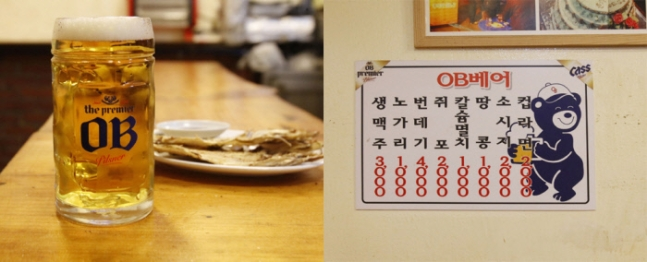 Source: Kyunghyang News
Source: Kyunghyang News
OB Bear, located in Nogari Alley, has been in business since 1980. It is a retro pub that will transport you back in time.
3. Coffee Hanyakbang (커피한약방)
Address: 서울특별시 중구 명동 삼일대로12길 16-6
16-6 Samil-daero 12-gil, Myeong-dong, Jung-gu, Seoul
Hours:
Mon-Sat: 11:00-22:00
Sun: 11:00-20:00
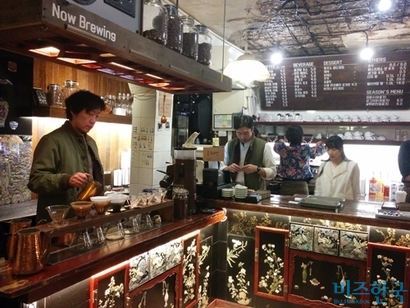 Source: Biz Hankook
Source: Biz Hankook
Earlier, we mentioned there was a medical institution called Hyeminseo in Euljiro. In the past, this site was a treatment space for ordinary people, but now it houses a cafe where everyone can enjoy coffee.
It's an antique coffee shop with an impressive interior and an old atmosphere. Hanyakbang means herbal medicine room.
4. Sewoon Plaza (세운상가)
Address: 서울특별시 종로구 청계천로159
159 Cheonggyecheon-ro, Jangsa-dong, Jongno-gu, Seoul
Hours: Mon-Sat 09:00- 9:00
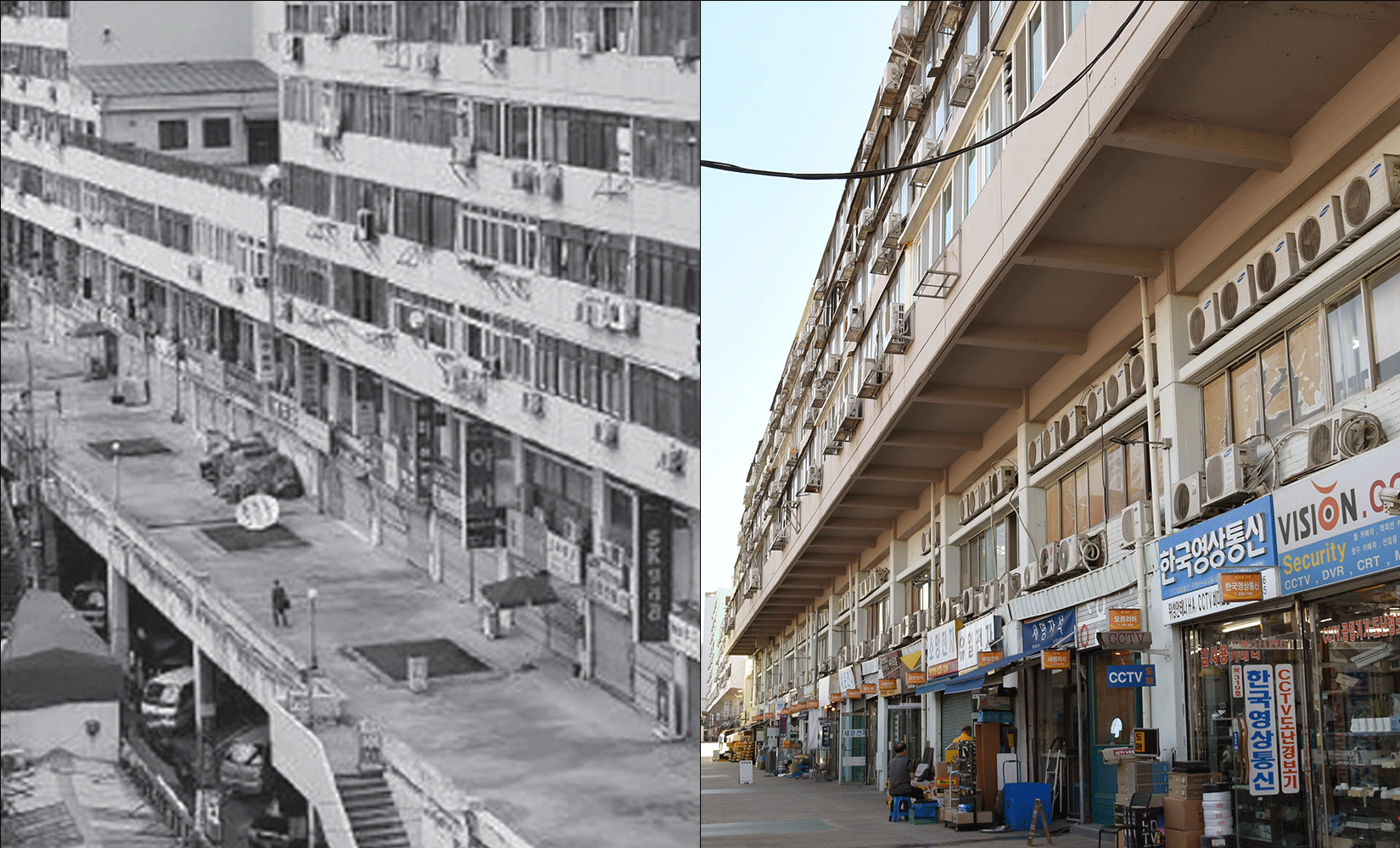 Source: Seoul Metropolitan Government
Source: Seoul Metropolitan Government
You may recognize this plaza from the drama, Vincenzo. Built in 1968, it is the first electronic shopping mall in Korea.
You can see various devices, such as electronic components, entertainment machines, karaoke devices, and lighting here. Also, there is a secret underneath the mall.
The regeneration project of the shopping district began in 2015, and in 2016, the excavation of cultural assets buried under the shopping mall was carried out.
In the process, the central government office of the Joseon Dynasty was discovered and preserved in the basement of the shopping mall.
It's amazing to see traces of the Joseon Dynasty in the middle of a busy city.
5. Eulji Myeonok (을지면옥)
Address: 서울특별시 중구 을지로동 충무로14길 2-1
2-1 Chungmu-ro 14-gil, Euljiro-dong, Jung-gu, Seoul
Hours:
Mon-Sat 11:00-21:00
Break: 15:30-17:00

If you walk along Euljiro's old streets, you may come across the iconic Eulji Myeonok.
Built in the 80s, it is a Pyongyang naengmyeon (cold noodle) restaurant with a 37-year long history.

The commonly known naengmyeon is Hamheung naengmyeon, made of arrowroot, but recently, Pyongyang naengmyeon, made with buckwheat as the main ingredient, has become very popular.
You may not be used to it at first because it's a bit bland compared to other varieties of naengmyeon, but once you taste more of the soup, you will fall for the charm of Pyongyang naengmyeon!
Mix the noodles and broth well to taste the savory taste of buckwheat.
6. Eulji Dabang (을지다방)
Address: 서울특별시 중구 을지로동 충무로 72-1
72-1 Chungmu-ro, Euljiro-dong, Jung-gu, Seoul
Hours: Mon-Sat 07:00-21:00

Next to Eulji Myeonok is Eulji Dabang, which has been operating since the 80s. These days, people go to cafes instead of dabangs (tea rooms), right? It's hard to find original tea shops these days, but you can feel the authentic atmosphere and taste at Eulji Dabang!
Eulji Dabang's most famous menu item Ssanghwacha, a traditional Korean tea, made of medicinal plants such as milkvetch, cinnamon, and licorice, which are very effective for colds.
This tea is always topped with an egg yolk that you break with a spoon and drink together!
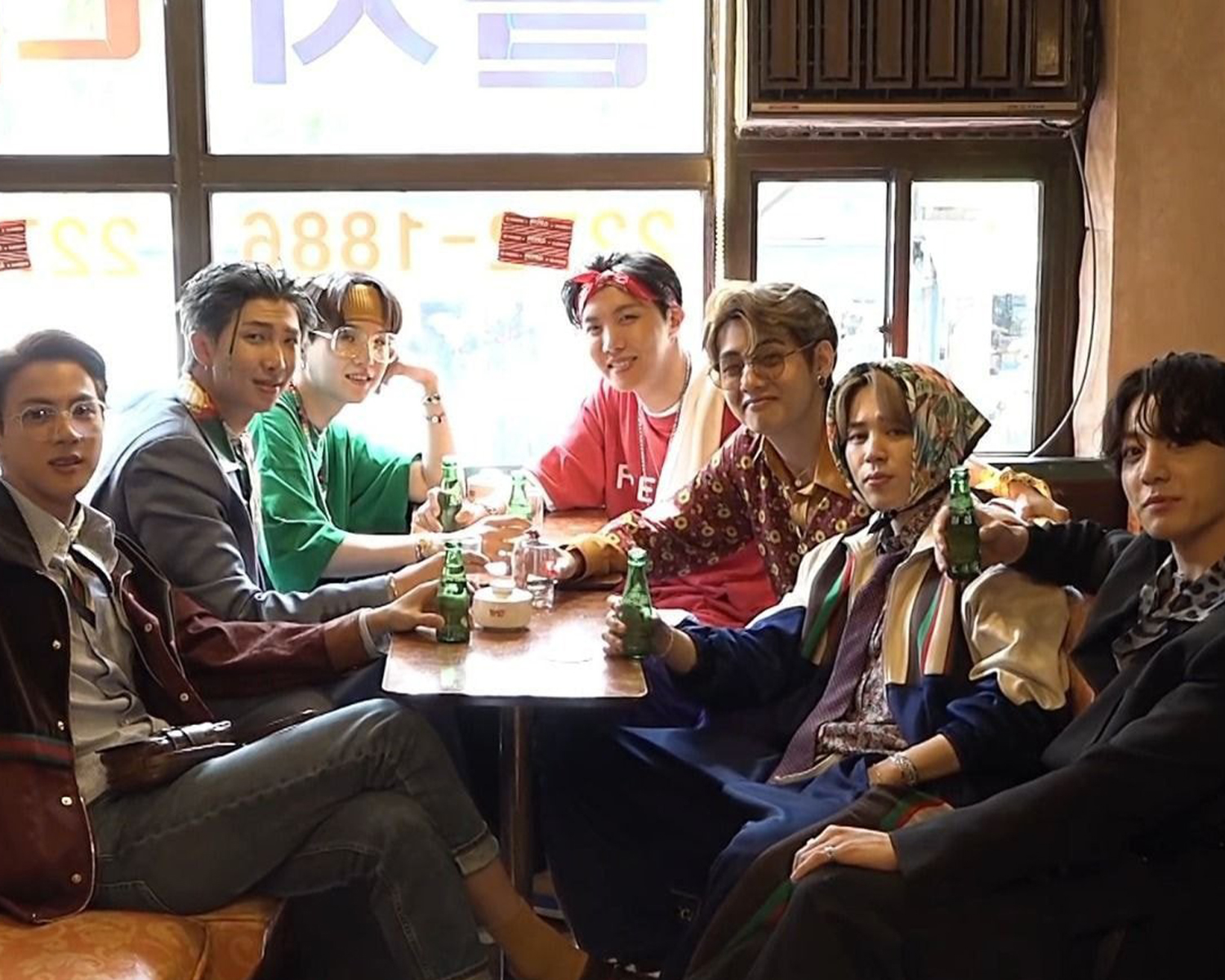
BTS has actually had a photoshoot here, so it's getting more attention. However, it is not possible to take many photos here due to the small size of the cafe.
7. Yang Mi Ok (양미옥)
Address: 서울특별시 중구 을지로 3가 충무로 62
62 Chungmu-ro, Euljiro 3-ga, Jung-gu, Seoul
Hours: 11:00-22:00

This restaurant is just a 1 minute walk from Eulji Dabang. Yang Mi Ok is a famous grilled intestines restaurant that was a favorite of former president, Kim Dae-jung.
 Source: E Daily
Source: E Daily
The wonderfully greasy, golden skin makes my mouth water just looking at it. The fact that a former president visited this place shows there are traces of history all over Euljiro.
This wraps up our tour of the old Euljiro alleys.
There are so many historical museums in Seoul, but being able to walk through Euljiro, a place where history is still alive today, could be considered the best kind of museum!

